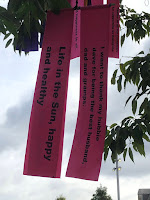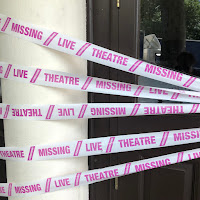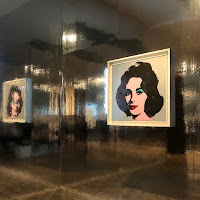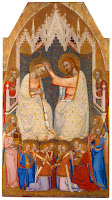London Mural Festival : Camille Walala

Funky installation at the Adams Plaza Bridge in Docklands by Camille Walala as part of the London Mural Festival. This works seemed to be panels of colour applied to the glass sided bridge though which the light shined though in places giving a lovely coloured pattern on the floor. It gave a weird sense of being pulled down the tunnel and I must admit I felt a bit strange as I walked down it, slightly disorientated. Reading the photo of the info panel on my phone now I realised the pattern shrinks and elongates giving a distorted effect. Well I certainly felt it. It was like being inside a Bridget Riley stripe picture. Not unpleasant but a bit strange and very clever. Review Evening Standard






















